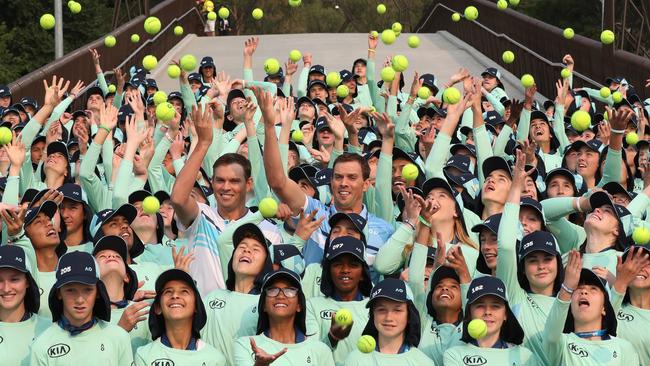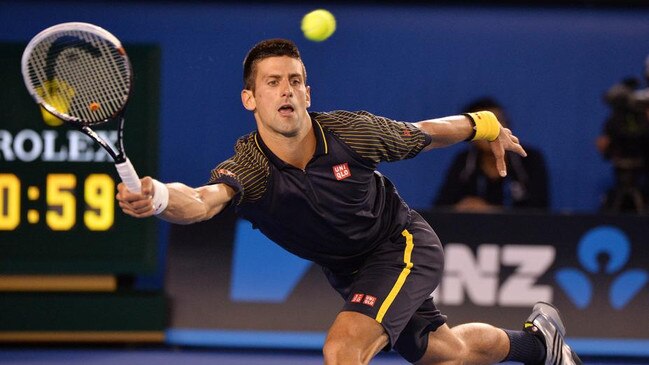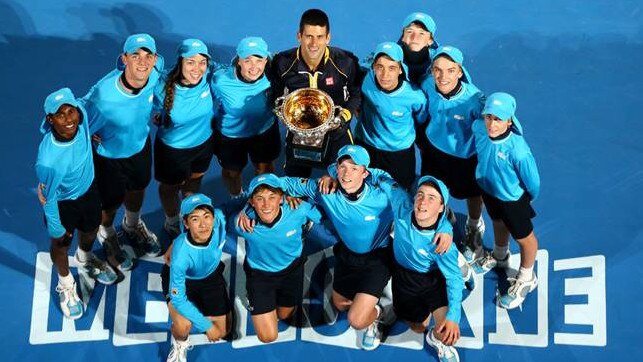Inside the life of an Australian Open ballkid
Anyone that loves tennis, dreams of being a ballkid at the Australian Open. But what is it actually like being one? We find out whether they get paid and if they get to meet the world’s best tennis players.
Tennis
Don't miss out on the headlines from Tennis. Followed categories will be added to My News.
Whether they’re rolling a ball to Serena Williams or passing a towel to Rafael Nadal, ballkids play an integral part in ensuring the Australian Open runs smoothly.
This year, a total of 360 ballkids will be involved with the Australian Open.
This includes two from France, six from China, 10 from India and 20 from Korea.

Cameron Morris, 23, has been working at the Australian Open for 11 years.
He began working as a ballkid in 2009 after applying online when he was just 12 years old.
Morris said the tryouts consisted of three rounds where the applicants’ skills were tested.
“They test your running and your ability to catch, throw and roll a ball,” Morris told the Herald Sun.
“You need to be able to service the players and do it as seamlessly as possible.”
Ballkids work at either the net or the base position.
The net is usually for the shorter kids and the base is for the taller ones.
Morris worked on the base for four years and “loved it”.
“It was the best part of the summer,” Morris said.
“I played a lot of tennis as a kid and my favourite player was always Roger Federer.
“I was lucky enough to work on one of his quarter finals at Rod Laver Arena. I still remember walking out onto the court with the biggest smile on my face.”
Although ballkid experiences are usually positive, the job can be challenging at times.
In 2014, a ballkid fainted in the heat and in 2015, one was forced to leave the court after copping a 200km serve from Feliciano Lopez “in the region where it hurt the most”.
This year, French tennis player Elliot Benchetrit asked a ballgirl to peel a banana for him.
However, Morris said he never felt pressure from the supervisors to perform well while being a ballkid.
“You put more pressure on yourself than what anyone else did,” he said.
“If you did well, you got to work on the bigger courts. This motivated you to try your best. After all, you wanted to be the best.”

Joshua Galbraith, 22, began working as a ballkid in 2010 and after four years in the role, he transitioned into being a ballkid supervisor.
“When you finish as a ballkid they really encourage you to work in other areas at the Australian Open,” Galbraith said.
“There’s no other sporting atmosphere like it.”
Galbraith said his favourite memory was working at the 2013 men’s single final when Novak Djokovic successfully beat Andy Murray.
“It was a highlight for me. The experiences you get as a ballkid are the best,” Galbraith said.

Although they don’t get paid, ballkids get to keep their uniform, shoes and sunglasses.
Their meals are also paid for and they receive a prize pack at the end of the tournament.
“In one of my first years I got a camera, and a tennis raquet. In the later years, I also received an iPod nano and a GoPro,” Morris said.
MORE NEWS
AUSTRALIAN OPEN 2020 PRIZE MONEY
HOW TO GO TO THE TENNIS ON A BUDGET
SCALPERS STUNG IN TICKET RESALE CRACKDOWN
Despite all of this, Morris said the best part was meeting new people.
“One of my best friends was a ballkid when I was one,” Morris said.
“I would have never met him if it wasn’t for the Australian Open.”
Applications are now open to be 2021 Australian Open ballkid.
